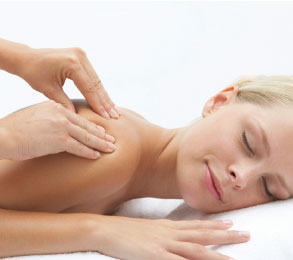Five Ways to Find Safe and Natural Relief from Osteoarthritis
by Deirdre Shevlin Bell

The search for safe and effective relief from osteoarthritis (OA), a condition that occurs when joint cartilage wears down over time, can feel like an uphill battle. Certain natural remedies can bring lasting relief from OA according to the Arthritis Research Council (ARC) study and other experts. That is good news, since the pain, stiffness, and loss of flexibility from arthritis makes it the nation's most common cause of disability.
One massage, and call me in the morning
Spa-lovers with osteoarthritis will be pleased to learn that all those massages that leave you feeling loose and limber are doing more than just helping you relax. According to a 2006 study published in the Archives of Internal Medicine, Swedish massage improves flexibility, decreases pain, and increases range of motion in individuals with osteoarthritis of the knee.
Low-impact exercise
"When people start to hurt, they tend to cut back on exercise," notes Michele Olson, Ph.D., professor of exercise physiology at Auburn University Montgomery and Fellow of the American College of Sports Medicine. But that is a mistake, as inactivity can make pain and stiffness even worse. Olson recommends Pilates and swimming or doing aqua-aerobics, but she emphasizes the importance of choosing gentle, weight-bearing exercise. Michael Murray, N.D. suggests that a person should find something they love, and find a way to continue doing it: If walking on concrete sidewalks is too hard on the joints, walk on the golf course.
Spice rub
Using a gel containing capsaicin, the active ingredient in chili, is very effective at providing temporary relief from osteoarthritis pain. Studies have found that capsaicin can deplete the substance that acts to transmit pain signals from nerve endings to the brain and cause inflammation in the joints.
Healing herbs
An ARC study evaluated several herbs and herbal combinations and found that one stood above the rest. Phytodolor, a branded combination of three herbs – aspen (Populus tremula), common ash bark (Franxinus excelsior), and golden rob herb (Solidago vigaurea) effectively manages the pain and inflammation associated with OA. Some studies have shown that aspen contains a substance that when ingested inhibits the production of certain prostaglandins in the nerves, resulting in pain relief. Common ash bark and golden rob herb also have pain-relieving properties, and common ash bark is an antioxidant – meaning it may reduce oxidative damage in the joint. The combination of the three herbs has been shown in animal studies to reduce inflammation. No major adverse effects have been reported, though some people do experience diarrhea, stomach upset, or skin reactions.
The SAMe Game
First discovered in 1952 and widely investigated for its usefulness in treating depression, S-adenosylmethionine (SAMe) is now showing promise as a treatment for OA. SAMe is a chemical compound that occurs naturally in the body, where it contributes to the synthesis of hormones and neurotransmitters. Studies suggest that when taken as a supplement, SAMe reduces pain and also stimulates the synthesis of collagen and proteoglycans, which are the major components of joint cartilage. Adverse effects are infrequent and mild, but can include nausea, restlessness, headache, dry mouth, and stomach upset. People with depression should consult with a healthcare provider before taking SAMe, as some incidences of anxiety and mania have been reported.
Copyright© HealthyLifestyles.com